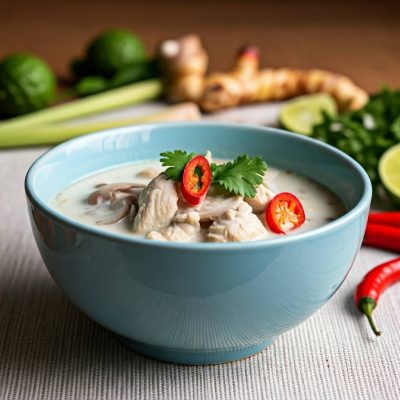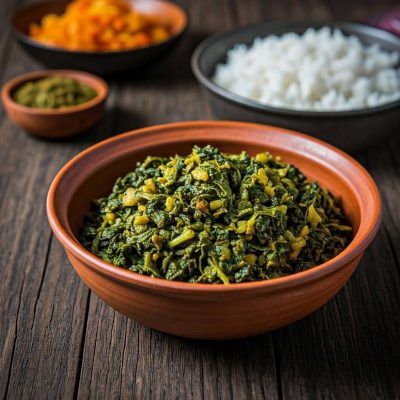Ingredients
For the Soup
- 500g fish (milkfish, tilapia, or any firm white fish), cleaned and sliced
- 1 liter water
- 1 medium onion, sliced
- 2 medium tomatoes, quartered
- 1 cup tamarind paste or 1 packet of Sinigang mix
- 2 tablespoons fish sauce (patis)
- Salt and pepper to taste
Vegetables
- 1 cup radish, sliced
- 1 cup eggplant, sliced
- 1 cup string beans, trimmed
- 1 cup okra (optional)
- 1 bunch spinach or kangkong (water spinach)
- 2 green chili peppers (optional, for spice)
Directions
Steps
1 Done | Prepare the BaseIn a large pot, boil water and add onions and tomatoes. Simmer for 5 minutes to soften the vegetables and enhance the flavor. |
2 Done | Add the Tamarind FlavorStir in the tamarind paste or Sinigang mix. Taste and adjust the sourness as needed. |
3 Done | Season the BrothAdd fish sauce, salt, and pepper. |
4 Done | Cook the VegetablesAdd radish and simmer for 5 minutes. Then add eggplant, string beans, and okra (if using). Cook until just tender. |
5 Done | Add the FishGently place the fish slices into the pot. Simmer for 7-10 minutes or until the fish is fully cooked. Be careful not to stir too much to prevent the fish from breaking apart. |
6 Done | Finish with GreensAdd spinach or kangkong and green chili peppers (if using). Turn off the heat and let the residual warmth wilt the greens. |
7 Done | ServeLadle the soup into bowls and serve hot with steamed rice. |
8 Done | Tips• Use fresh fish for the best flavor and texture. • Tamarind can be substituted with calamansi juice, lemon juice, or a mix of vinegar and sugar in a pinch. • Adjust the sourness and spice level according to your preference. Enjoy this refreshing and tangy Fish Sinigang with your loved ones! |
9 Done | Looking for a chicken twist on this classic dish?Try the Chicken Sinigang, which brings the same comforting, tangy flavors of the original but with tender chicken as the star. Whether you prefer fish or chicken, this dish is sure to satisfy and bring a taste of Filipino tradition to your table. Enjoy it with steamed rice for a hearty, flavorful meal! |













